IATA AGM 2014: A century of scheduled commercial aviation
As industry leaders gather for the 70th International Air Transport Association Annual General Meeting in Doha many are also beginning to look back on a century of scheduled commercial aviation.
Nearly everything has changed since the first scheduled commercial flight, in Florida on January 1st 1914, but the desire to connect the world remains as strong as ever.
Here Breaking Travel News looks back at 100 years of scheduled commercial aviation.
A Century in the Making
While London, Hong Kong and Atlanta are now the world’s global aviation great aviation hubs, this mighty industry traces its origins to a more unlikely source - the Municipal Pier in St. Petersburg.
It was here, on New Year’s Day 1914, that we find the beginnings of today’s multi-billion dollar scheduled commercial aviation industry.
The world’s first regularly scheduled heavier-than-air airline, known as the St. Petersburg–Tampa Airboat Line, took off from the pier bound for Tampa
Tony Jannus piloted a Benoist flying boat, with Abram Pheil, the former Mayor of St. Petersburg, as his passenger on a flight that lasted 23 minutes.
This marked the dawn of regular passenger air travel.
The Benoist Airboat was an early version of what we now know as a seaplane, able to take off and land on water – necessary as there were no airports at that time!
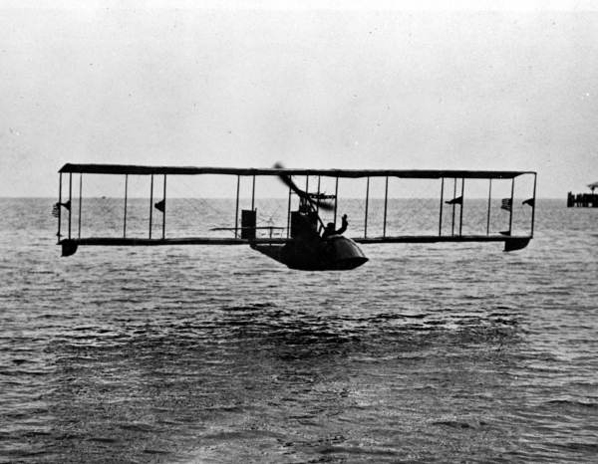
A Benoist Airboat flew the first scheduled commercial departure
Only a few years later KLM would operate its first flight, making it the oldest carrier still in operation today.
The first KLM flight took place on May 17th 1920, with pilot Jerry Shaw taking off from Croydon Airport, London to Amsterdam.
The flight was flown using a leased Aircraft Transport and Travel De Haviland DH-16, registration G-EALU, and was carrying two British journalists and a number of newspapers.
KLM transported 345 passengers and around 25,000kg of mail and cargo in its first year.
This is approximately the load carried by a single 747 flight today.
From these early beginnings, aviation as we know it today really began to take shape with the Warsaw Convention, signed on October 12th 1929.
The first international agreement governing aviation, the deal mandated passenger ticket and baggage check, and harmonised liability law.
According to Clauses 17 and 18 of the Warsaw Convention, airline companies are liable for any damage that occurs to passengers or their belongings during in-flight.
However, airline companies will not be held responsible if the damage results from the passenger’s own fault or one of their temporary servants such as doctors assisting ill passengers on their own initiative.
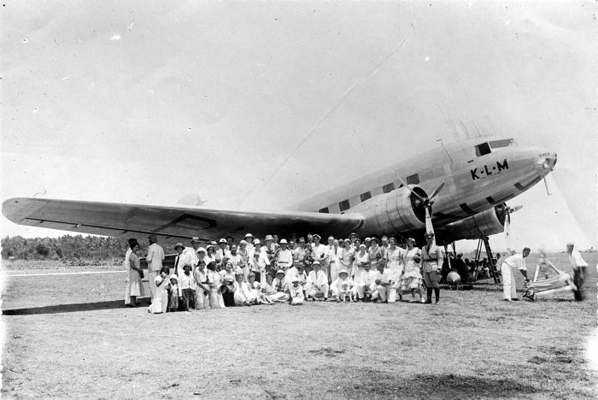
An early KLM flight takes off from Amsterdam
In 1935, Pan Am operated the first Trans-Pacific Clipper flight between San Francisco and Manila. However, the flight took over a week, with a series of stops along the way!
Legend has it that the flight was supposed to go over the San Francisco-Oakland Bay Bridge, which was under construction at the time, but the pilot realised it wouldn’t make it and managed to steer the plane underneath instead.
A great leap forward came in 1936, with the launch of the Douglas DC-3.
Often nicknamed as the “plane that changed the world”, the aircraft is considered by many to be one of the most significant transport aircraft ever made.
Entered service with American Airlines, the plane flew from New York to Chicago non-stop, with a list price of around $100,000 to buy.
The DC-3 aircraft was the result of a call from American Airlines chief executive CR Smith to Donald Douglas, during which Smith persuaded a reluctant Douglas to design a sleeper aircraft based on the DC-2 to replace American’s Curtiss Condor II biplanes.
Douglas agreed to go ahead with development only after Smith informed him of American’s intention to purchase twenty aircraft.
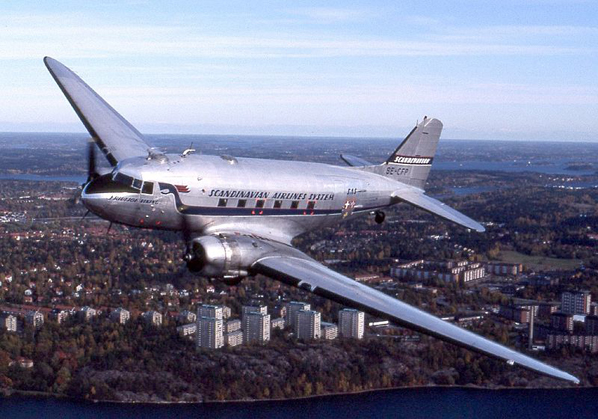
The Douglas DC-3, the ‘plane that changed the world’
Early pioneers American Airlines were also responsible for the first ever airport lounge, called the Admirals Club, at LaGuardia Airport, New York.
After opening in 1939, lounges have become synonymous with airlines offering customers the opportunity for greater productivity, comfort and convenience on their journey.
Updating the earlier Warsaw Convention, the Chicago Convention of 1944 established the rules and regulation for aircraft, airspace and safety. It was signed by 52 signatories and is still the legal bedrock for commercial aviation today.
The International Air Transport Association, which celebrates its 70th Annual General Meeting in Doha this week, was founded in Havana, Cuba in 1945.
IATA has grown ever since and now represents 240 airlines or 84 per cent of total air traffic.
The body represents, leads and serves the industry through initiatives such as the IATA Operational Safety Audit and Simplifying the Business.
Its financial services form the backbone of the airline industry.
Also in 1945, South African Airways launched its Springbok Service connecting South Africa with Europe.
The journey took three days, but was considerably faster than other modes of transport.
Demand for a quick connection between Africa and Europe saw the service expand from weekly to six times a week.
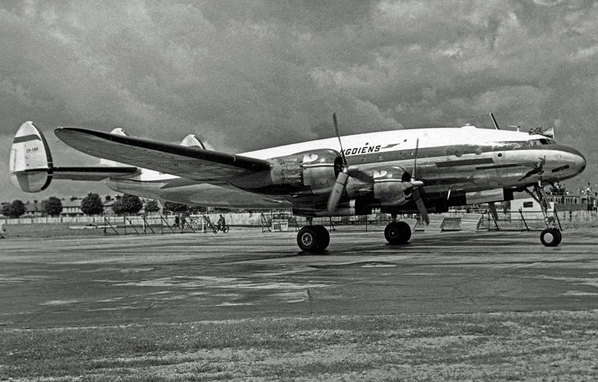
South African Airways was an early commercial aviation pioneer
Qantas began flying the first ‘Kangaroo’ route in 1947.
A Lockheed Constellation ferried 29 passengers and 11 crew from Sydney to London, with stopovers in Darwin, Singapore, Calcutta, Karachi, Cairo and Tripoli (passengers stayed overnight in Singapore and Cairo).
A return fare was £585, equivalent to 130 weeks average pay, while today it would be about a week’s wage - an indication of the cost reductions that have taken place in the industry.
In 1952 the first production commercial jetliner, the de Havilland Comet, entered service with BOAC.
The Comet was a hit with passengers including Queen Elizabeth, the Queen Mother and Princess Margaret, who were guests on a special flight on June 30th 1953 hosted by Sir Geoffrey and Lady de Havilland, and thus became the first members of the British Royal Family to fly by jet.
Flights on the Comet were about 50 per cent faster than on advanced piston-engined aircraft such as the Douglas DC-6, and a faster rate of climb further cut flight times.
In August 1953 BOAC scheduled nine-stop London to Tokyo flights by Comet for 36 hours, compared to 86 hours and 35 minutes on their Argonaut piston airliner.
The Comet suffered from safety issues, including the first fatal jet airline crash at Karachi, Pakistan, however, and although later models proved successful, BOAC stopped flying the aircraft in 1965.
The Comet’s last commercial flight was in 1981.
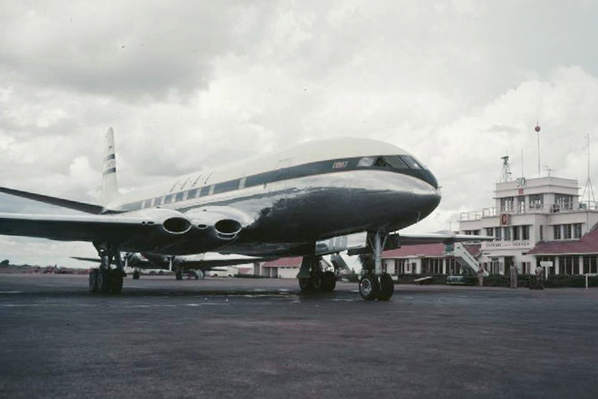
BOAC de Havilland Comment
Commercial aviation really came of age in 1964 during one of the most iconic moments in history, when The Beatles arrived at JFK, New York – signalling the aviation industry’s ability to integrate and spread cultural values.
The following day, they appeared on The Ed Sullivan Show, watched by some 73 million viewers.
In 1970, the Boeing 747, the first wide-body aircraft, entered service.
Boeing famously “bet the company” on delivering the 747, with First Lady of the United States Pat Nixon christening Pan Am’s first 747, Clipper Victor, at Dulles International Airport on January 15th in the presence of Pan Am chairman Najeeb Halaby. I
Instead of champagne, red, white, and blue water was famously sprayed on the aircraft.
The 747 entered service on January 22nd, 1970, on Pan Am’s New York-London route; the flight had been planned for the evening of January 21st, but engine overheating made the original aircraft unusable.
The ‘Queen of the Skies’ is still going strong, with its latest passenger variant, the 747-8I, coming online in 2012.
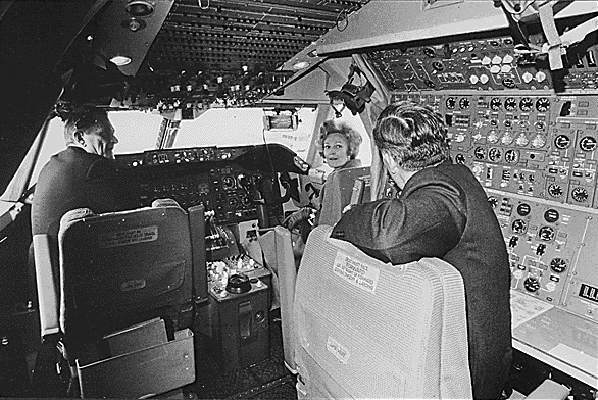
US First Lady Pat Nixon on board the first Boeing 747
A year later, one of the most far reaching changes in aviation history took place, with the launch of the first low-cost carrier Southwest Airlines.
Low cost carriers have since transformed the aviation landscape, brought a number of innovations and forced legacy carriers to improve competitiveness for the benefit of the consumer.
Ryanair and easyJet in Europe and Air Asia, Scoot and Tiger Airways in Asia have all come to dominate regional routes, with further changes set to take place in the coming decade.
A technical, but tremendously important change followed shortly after, in 1972, with the launch of the first neutral paper ticket and establishment of the Billing and Settlement Plan.
The BSP ensures airlines receive money owed promptly and as accurately as possible enabling interline connectivity.
In 2012, 88 BSPs served 350 airlines in 177 countries and territories, processing $249 billion.
Concorde flew its first scheduled service in 1976, from London to Bahrain and then Paris to Rio de Janeiro. It was covered in white reflective paint due to the heat build up caused by its high speeds.
British Airways used the ‘Speedbird Concorde’ call sign to notify air traffic control of the aircraft’s unique abilities and restrictions, but the French using their normal call signs.
The Paris-Caracas route (via Azores) began on April 10th.
The US Congress had just banned Concorde landings in the US, mainly due to citizen protest over sonic booms, preventing launch on the coveted North Atlantic routes.
The US Secretary of Transportation, William Coleman, gave permission for Concorde service to Washington Dulles International Airport, and Air France and British Airways simultaneously began service to Dulles on May 24th 1976.
Despite a high profile crash in Paris and the turn of the millennium, the supersonic jet remained in service for 27 years.
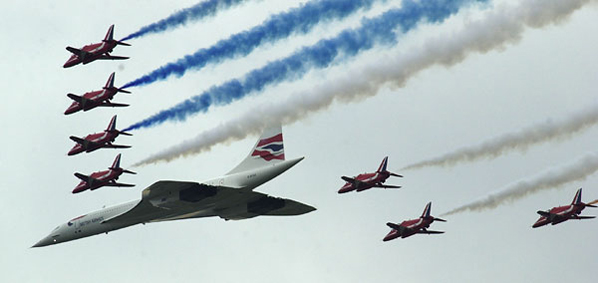
Concorde remains a symbol of British engineers prowess
As important as advancements in engineering with the US Airline Deregulation Act of 1978.
The Act phased out government control of fares, routes and market entry by new airlines, exposing US carriers to market forces and beginning the long road to the full, global liberalisation of the industry.
An example can be seen in the price of a New York to Los Angeles round trip which would have cost near $1,500 before deregulation and today costs around $300.
Again leading the way, Robert Crandall president of American Airlines was the driving force behind AAdvantage, which launched in 1981.
The scheme is recognised as the industry’s first true frequent flyer program, even though Texas International Airlines had launched a loyalty scheme a couple of years earlier.
AAdvantage clearly blazed a trail and remains among the largest FFPs with around 67 million members.
Another major trend in aviation began in 1989, with the KLM-Northwest Airlines Wings Alliance.
The first major alliance never grew beyond two airlines but it proved both the advantages of consolidation to the consumer and the challenges that had to be overcome.
A few years later in 1997, five airlines - Scandinavian Airlines, Thai Airways International, Air Canada, Lufthansa, and United Airlines - founded Star Alliance.
The five airlines shared the traditional star logo from the beginning with the five points representing the five founding airlines.
The alliance also adopted their first slogan ‘The Airline Network for Earth’, with the goal to have “an alliance that will take passengers to every major city on earth”.
Two other global airline alliances, oneworld and SkyTeam, soon followed bringing a multitude of benefits to customers and replicating as much as possible the economies of scale brought about by consolidation.
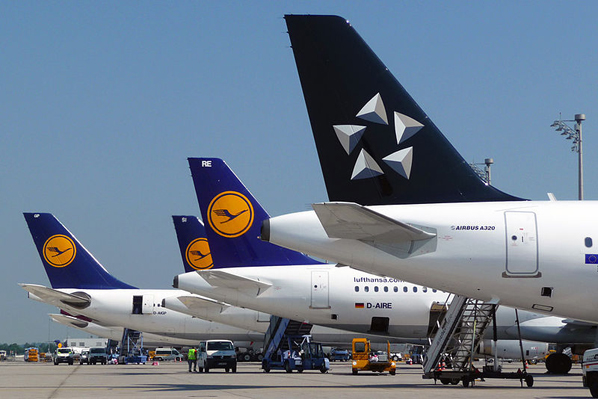
Lufthansa was among the founder members of Star Alliance
At the same time a global shift in aviation was taking place in the Middle East, with Emirates Airline, followed by Qatar Airways and Etihad Airways of Abu Dhabi growing into ‘super connector’ status.
With government support, world-class infrastructure and ever growing route networks, the three carriers represent a serious shake up to the established global aviation order.
In 1998 Cathay Pacific launched the first Transpolar flight.
Dubbed Polar One, the flight crossed the Northern Polar region and connected New York with Hong Kong in 16 hours.
It improved the connection between the United States and Asia, serving the continued growth in demand for air travel between these two regions, and is now a key element in aviation’s support of the global economy.
Following suit, Singapore Airlines introduced non-stop flights to Los Angeles and Newark, New York. These were the longest scheduled commercial flights, driven by the need to connect people and business in world leading cities.
In 2008, electronic tickets removed the need for a paper ticket and improved the convenience and reliability of air travel as well as paving the way for other Fast Travel initiatives such as self-boarding and bag recovery.
Lufthansa operated the first series of scheduled biofuel flights between Hamburg and Frankfurt in 2011 as the airline industry battled for sustainability.
These were the first of many passenger biofuel flights and a number of biofuel variations have since been successfully tested.
The challenge now is to ensure its commercial viability to help airlines archive their environmental goals.
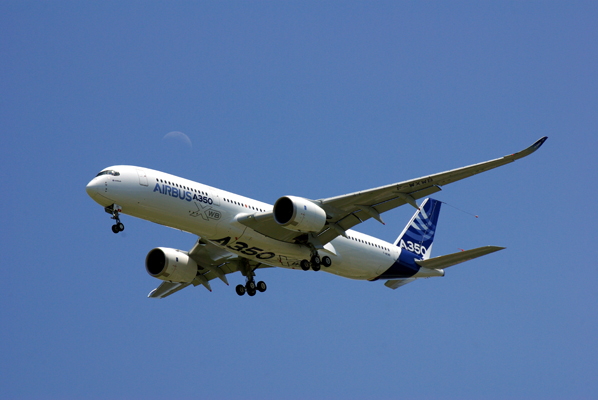
Qatar Airways will soon launch the Airbus A350
Bringing us to the present day and to Doha, Qatar Airways will soon become the launch customer of the Airbus A350.
The aircraft is a century away from the bi-plane used by Tony Jannus and represents yet another leap forward in customer comfort and operational and environmental efficiency.

